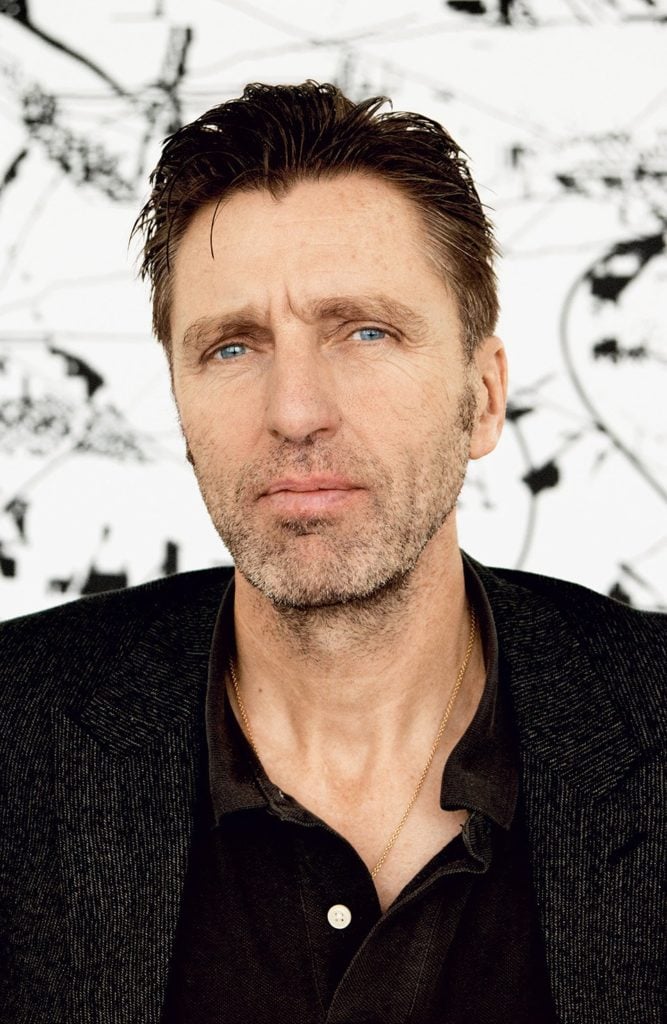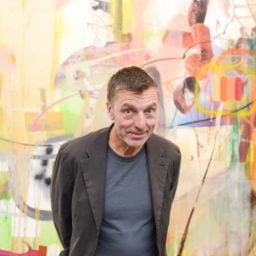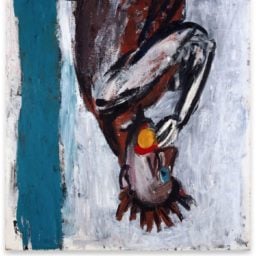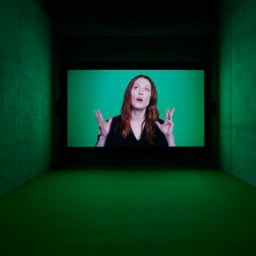Albert Oehlen is something of a living legend. He might be 63, but his reputation as an enfant terrible remains. There’s something eternally youthful about the German painter, who first came to prominence in the 1980s and, along with his partners in crime Martin Kippenberger and Werner Büttner, redefined what painting could be. Earlier this month, TASCHEN published an epically sized Oehlen monograph featuring 400 works, a survey of the abstract painter’s extraordinary career so far.
artnet News spoke to Oehlen ahead of the opening of his two-person exhibition at the Marciano Art Foundation in Los Angeles on March 1, which places his work alongside that of his former student, the New York-based Peppi Bottrop. Meanwhile, in Berlin, Oehlen is showing new paintings and drawings at Galerie Max Hetzler alongside the work of Julian Schnabel in an exhibition opening on March 14.
Oehlen reminisces about the Berlin art scene in the ’70s, explains why his works on paper are more complicated than his paintings, and offers advice for young artists.
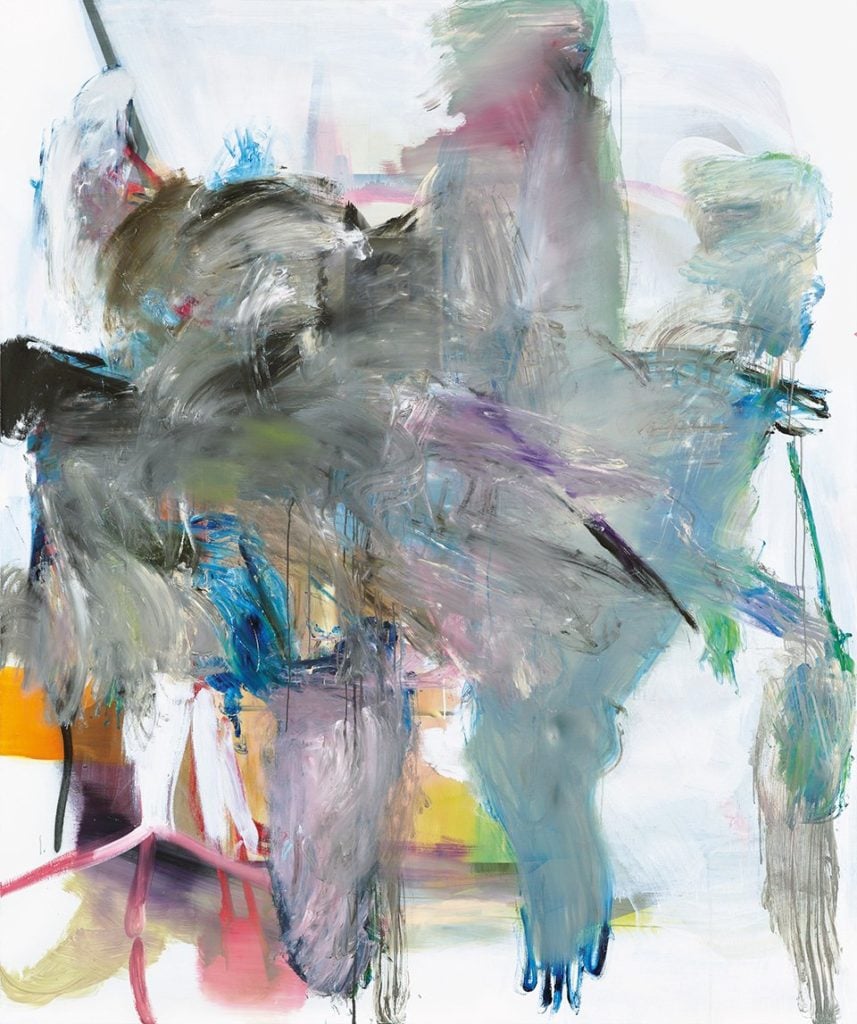
Albert Oehlen’s FM 20 (2008). © Albert Oehlen. Courtesy Galerie Max Hetzler, Berlin | Paris and the artist.
In describing your painting practice, some have used the term “shapeshifter.” Indeed, your paintings over the years have dodged easy categorizations. What is the motivation for your constant shifting—is it a survival tactic, or a remedy for boredom?
I don’t see them as that different because the impulse behind it was always quite the same. I had a few ideas throughout 35 years, and I think it’s natural to try a couple of things. They shift from very colorful to black-and-white and back to colorful after a while, but I don’t see that as so special. I’m proud of what I did, but not about how it looks different. It doesn’t look different to me.
What is a typical day like in the studio these days?
Like always. I go to the studio every day and I paint.
What are you working on at the moment?
Cleaning up! In terms of painting—I’m doing clean up.
You were part of the the art scene in Berlin before the Fall of the Wall. When you return, the city must feel so different. How does that affect you?
It’s a bit different because I came in the early ’70s. I left in ’77, right before the Moritzplatz painters got famous and the “wild painting” thing started. But it doesn’t affect me. I am a successful artist now, and I wasn’t in the ’70s, and it’s a different situation for me anyway. I remember that there were less than a handful of galleries. There was not much going on, but there was a big subculture. That was my world. It was not so much art, I was interested in many things. I was like a thousand others, living in this subculture.
You received a court summons for your first painting, a wall painting you made with Werner Büttner in 1978, because it contained pornographic images. You both had to go back and “revise” the work. Given that your very first painting was censored, I am interested to learn what you think of the political correctness and how it is transforming the art world today?
It’s ridiculous: Painting is not the painter or the artwork. It’s just not the same. People might make some mistakes now, but I think it will become okay again soon. Anyways, I hope.
What was depicted in the work you and Büttner made?
It was a little pornographic detail, but it was very roughly painted and the whole thing was rather funny. Büttner and I made the point to excuse ourselves right away and overpaint it, but this was actually a provocation to our friends at art school, because they were expecting us to make a political point. We had more fun apologizing and overpainting it. It was fun. We could as well have done nothing, because it was painted too roughly.
It seems unfortunate that now within the realm of figurative painting, people have become so particular in defining who gets to paint what.
Right. It’s really interesting, the discussions that are coming up with Dana Schutz for example. My point throughout all the years was not believing representation and not believing in symbols. Whatever I did, it was about that. I didn’t believe in transporting a message through a painting. Even if I’m partly wrong or entirely wrong, that is my point.
Your early works dealt with postwar Germany. What do you think painting is doing these days in the political realm, especially given the surge of right-wing sentiments in Europe?
I learned after I started painting, transporting messages is difficult. It’s very hard to control. In that sense, my political point of view has changed in thinking about the possibilities I have as a painter, but I think that this right-wing renaissance is very bad. But I think that even painters can play a positive role.
What kind of advice would you give the younger generation of painters, especially in regards to the changing and rather precarious art market conditions today?
I can’t. I got into my kind of market very early—that was in the early 1980s. I don’t even know how it works today. They tell me what’s going on. I ask them. It’s a kind of entertainment. It doesn’t affect me, but I learn it from there. I think Berlin has been extremely interesting for a long time, because so many young people are working there. It doesn’t happen in other cities to the same extent. It has a huge community, though I don’t know if it’s quite a community. There is a huge amount of young people. There’s so much happening.
Can you tell us a little bit about your exhibition at Max Hetzler?
Yes, it’s going to be a couple of paintings and some drawings. I don’t produce many drawings, but sometimes it’s fun to have some.
Are they studies?
In my case, it’s rather the opposite. It’s more the essence of the painting. My paintings are not planned and executed, they’re more growing on the canvas. When they’re finished, when I find something, then it makes sense to have a distillation of it on paper.
I want to ask about your renowned “Computer Paintings” series. Are there any young painters who you think deal well with the digital?
When I did it, there was quite some distance to technology. I was not relying on the computer to help. I see some painters working with computer images and it makes the work less interesting, when you see the computer through the painting. That I don’t like so much. Then there are other artists that are just doing amazing work, like Wade Guyton.
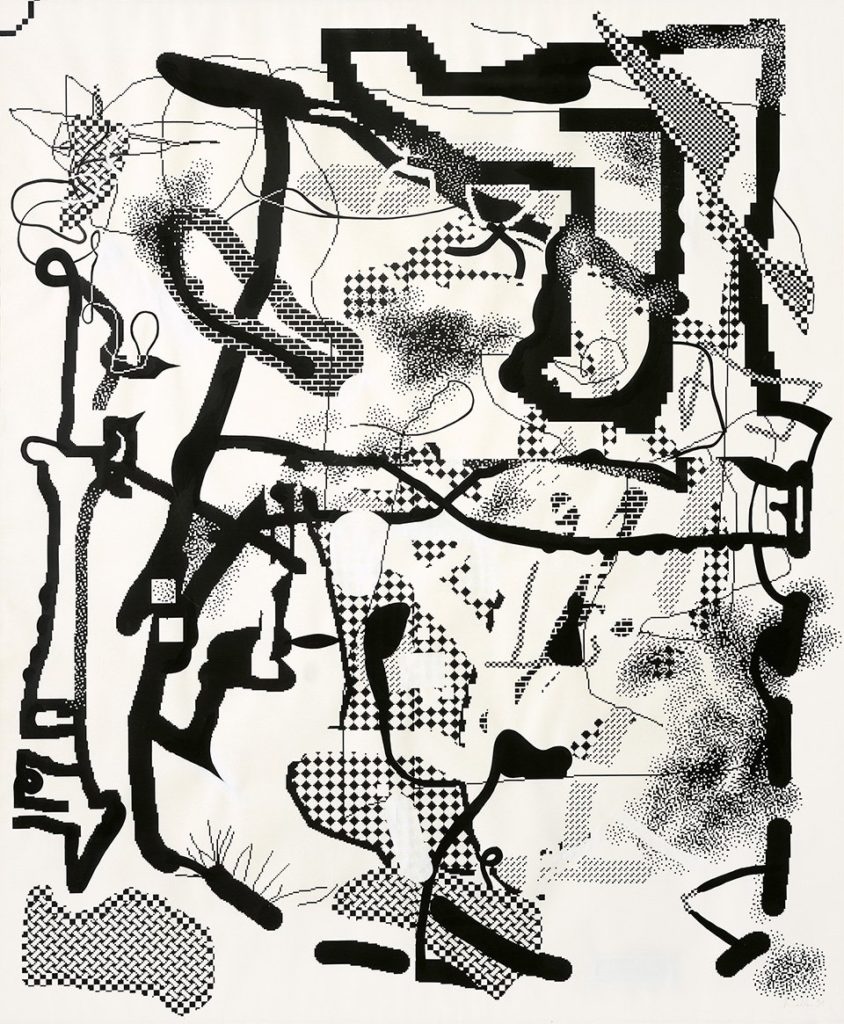
Albert Oehlen’s Prix Ars Electronica (1991). © Albert Oehlen. Courtesy Galerie Max Hetzler, Berlin | Paris and the artist.
Is there any advice you have for young painters today?
No, not really. They’re so much younger than me and they’re trying to kill me. And they should do that.
You have a history of working collaboratively, and came up with the late Martin Kippenberger in the ’80s. What are your memories of that time?
It was a very easy time. That’s nothing special for me or for us. It’s just a special age. There’s so much more communication when you’re 24 and that’s the point. That would be my advice. Take advantage of that for as long as and as intensely as they can. That’s the fun time. Now, it’s different fun, but I really miss that. People go their own ways.
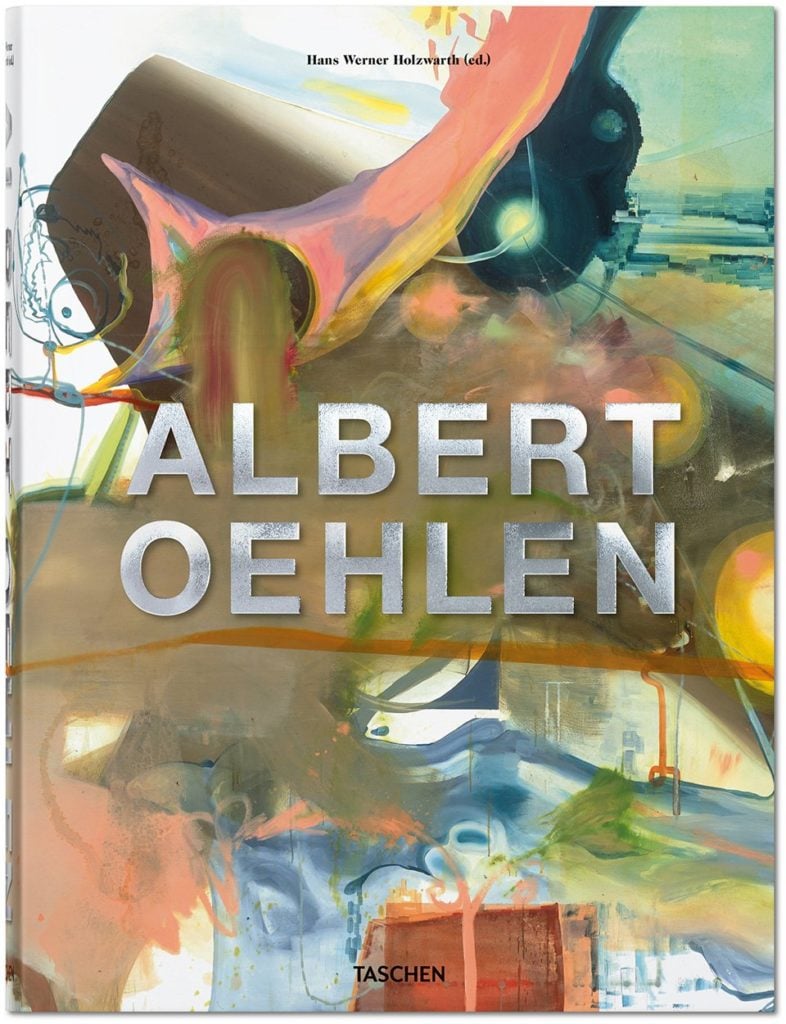
Cover of ‘Albert Oehlen’ by Hans Werner Holzwarth.
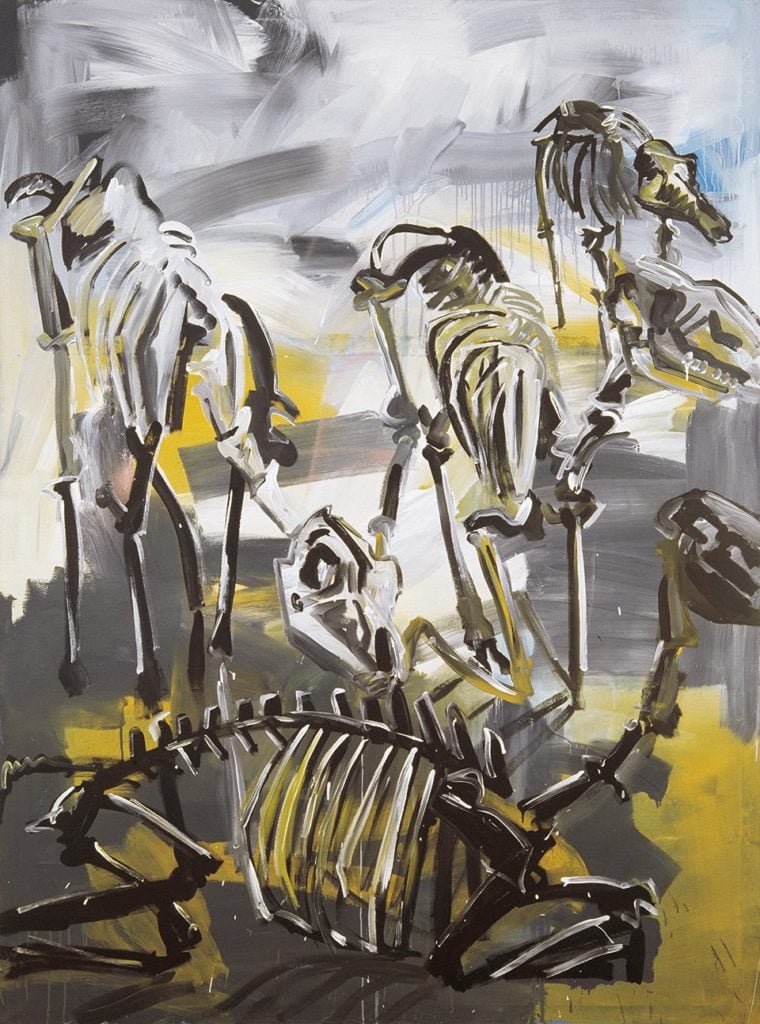
Detail of Albert Oehlen’s Schwarze Vernunft III (1982) © Albert Oehlen. Courtesy Galerie Max Hetzler, Berlin | Paris and the artist.
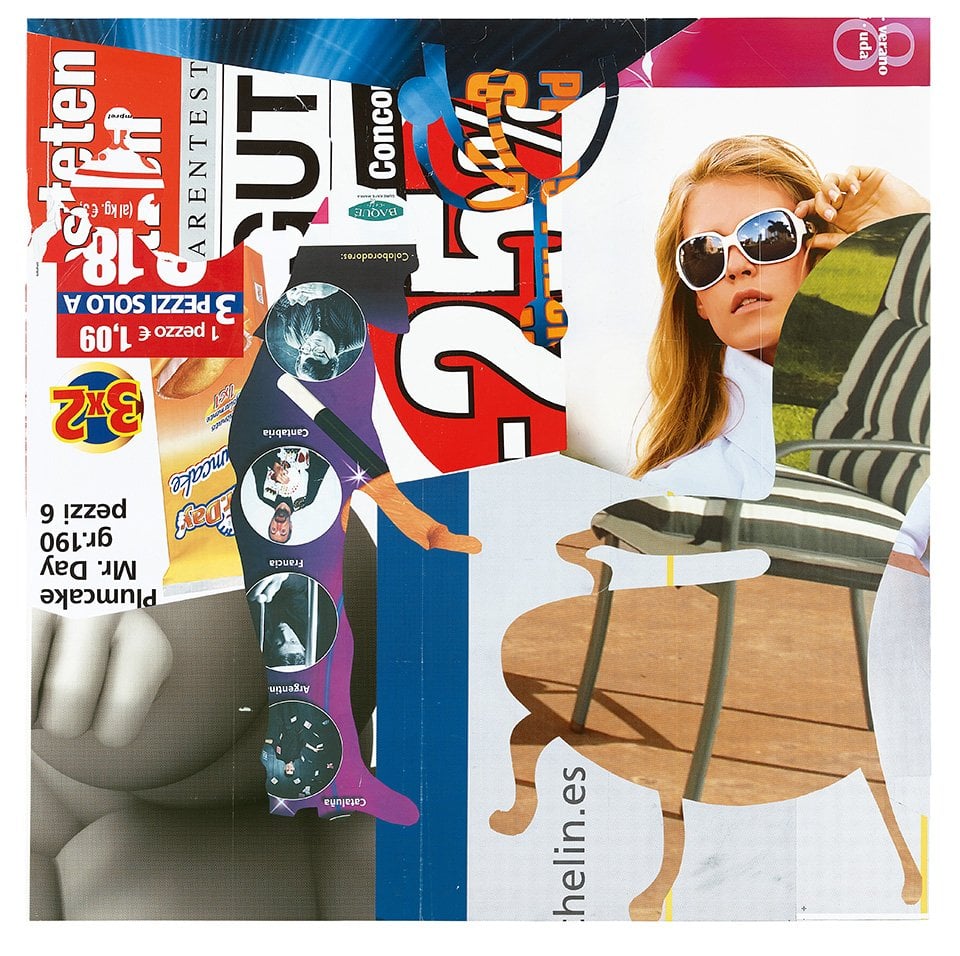
Albert Oehlen, I 12 (2010). © Albert Oehlen. Photo by Lothar Schnepf, Köln.
